In April 2025, a group of Trent and University of Tromsø faculty and students continued the exploration of the Arctic borderlands in a visit to North America. At the end of the 2025 Winter semester, they travelled to Anchorage to begin an eight-day research field trip that took them from Whittier in the Prince William Sound to Homer, and the University of Alaska, Kachemak Bay campus. The field trip focused on developing a better understanding of the region’s infrastructure – both for tourism and urban economies, on understanding Indigenous governance and history, sub-Arctic ecosystems, and socio-economic development more generally.
Partners from the University of Alaska Anchorage (Diane Hirshberg and Douglas Causey) co-organized the field trip along with Peter Haugseth (UiT) and Heather Nicol (Trent University), providing deep insight into the ecological and sociological landscapes the group explored. This ranged from seminars with local experts and academics, to engaged field work with the Kachemak Bay Campus and the Semester by the Bay students in Homer (thanks to Deborah D. Bӧge Tobin). The group also included students from the Arctic Environmental security class of Univeristy of Alaska, Anchorage. Other trip highlights included a tour and discussion of logistics at the Port of Anchorage, a visit to the Chugach State Park and National Forest, an-depth tour and discussion at the Alaska Native Heritage Centre, and meetings with local leaders and experts – including Aaron Legget, President of the Native Village of Eklutna. Students also investigated Anchorage’s urban landscape, public institutions, and retail landscapes.
The Alaska BANHER project focused on situating knowledge about urbanization, infrastructure, Indigenous governance and ecological through local learning and research. Using the BANHER experiential learning and research framework, we concentrated on identifying challenges facing the Circumpolar region under conditions of climate change and new geopolitical tensions; understanding these new existential threats within the region; and exploring the multiscalar effects of local, regional and global, and the importance of new state and non-state actors.
In the words of Jacob Gerard, a Trent Biology major who participated throughout the entire BANHER project, the Alaska leg was instrumental in making these connections:
This visit to Alaska provided me with a lot of insight on infrastructure, environmental research and education, and Indigenous peoples of Alaska … the supply chains of Alaska are heavily reliant on the port system to supply consumer goods like food, clothing and other goods. If the port, the rail system, or the pipeline went down, this would effectively cripple the states economy and its ability to sustain the residents and businesses in Alaska. Learning about the Dena’ina people’s rich histories, languages and culture was eye-opening. Aaron Leggett’s work with the Anchorage Museum has been monumental in restoring the cultural practices, language and culture of the Dena’ina people throughout Southcentral Alaska.
The biggest takeaway from the entire BANHER experience, not just the most recent Alaska trip was how everything is interconnected. The individuals that you build your professional networks with are interconnected and have a lot in common. People want to collaborate to establish a stronger future for the Arctic with resilient communities, infrastructure, economies, and a space for Indigenous peoples to practice their cultures without persecution. Despite the geopolitical uncertainty in the circumpolar north, I am cautiously optimistic that we are moving towards this positive and collaborative future.
The BANHER project was funded by the Norwegian Ministry of Foreign Affairs and UArctic’s north2north support mechanism. It was developed in 2020 by the northern studies program group, at the department of tourism research and northern studies at the University of Tromsø (UiT) and was planned to last from 2023 until 2025/2026. One of the project’s main goals is to gain more understanding of the plural nature of the Arctic region and its central dynamics. All facilitated by excellent fieldwork opportunities and experiential learning approaches across national boundaries in the circumpolar north. It is aimed at students and scholars in North America and the Nordic countries. While the projects end in July 2025, watch for more reports and publications about this project in the 2025-26 academic year.

